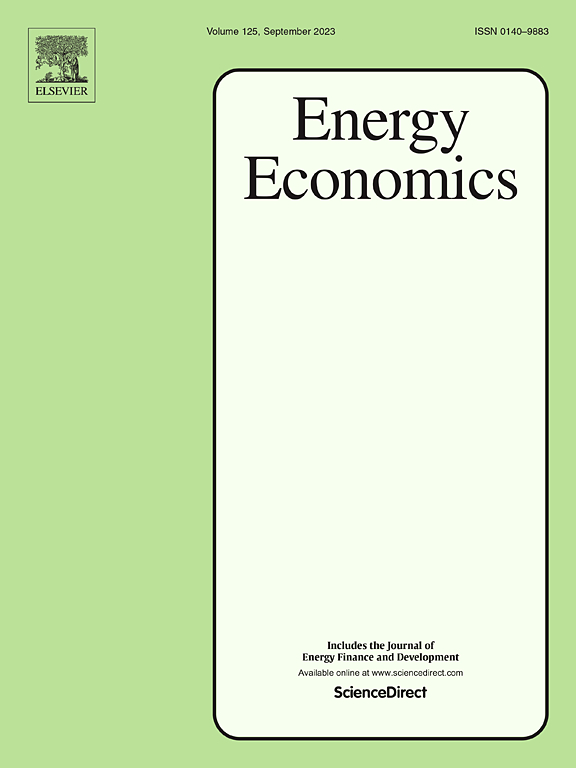碳风险约束下的投资组合优化:设置有利于绿色投资的有效约束
IF 13.6
2区 经济学
Q1 ECONOMICS
引用次数: 0
摘要
气候变化及其伴随的适应给企业带来了重大挑战,并使它们面临新的风险。投资者在制定投资组合时必须考虑这些风险。本文研究了期望效用框架下碳风险约束下的投资组合优化问题。为了说明碳风险约束的含义,我们考虑一个只有一种无风险资产和两种风险资产的金融市场,一种绿色资产和一种棕色资产。我们确定了实施碳风险约束导致绿色投资增加和棕色投资减少的条件。令人惊讶的是,在某些条件下,增加对棕色资产的投资也可能是最优的。此外,我们采用不同的碳风险指标,如碳强度和布朗-绿色-得分,以比较所得的最优投资组合。本文章由计算机程序翻译,如有差异,请以英文原文为准。
Optimizing portfolios under carbon risk constraints: Setting effective constraints to favor green investments
Climate change and its concomitant adaptations pose significant challenges for companies and confront them with new risks. Investors must consider these risks when shaping their investment portfolio. This study investigates portfolio optimization under a carbon risk constraint in an expected utility framework. To illustrate the implications of the carbon risk constraint, we consider a financial market with only one risk-free and two risky assets, one green and one brown. We identify conditions under which the imposition of the carbon risk constraint leads to an increase in the green investment and a decrease in the brown investment. Surprisingly, an increased investment in the brown asset can also be optimal under certain conditions. Further, we employ different carbon risk metrics, such as carbon intensity and Brown-Green-Score, to compare the resulting optimal portfolios.
求助全文
通过发布文献求助,成功后即可免费获取论文全文。
去求助
来源期刊

Energy Economics
ECONOMICS-
CiteScore
18.60
自引率
12.50%
发文量
524
期刊介绍:
Energy Economics is a field journal that focuses on energy economics and energy finance. It covers various themes including the exploitation, conversion, and use of energy, markets for energy commodities and derivatives, regulation and taxation, forecasting, environment and climate, international trade, development, and monetary policy. The journal welcomes contributions that utilize diverse methods such as experiments, surveys, econometrics, decomposition, simulation models, equilibrium models, optimization models, and analytical models. It publishes a combination of papers employing different methods to explore a wide range of topics. The journal's replication policy encourages the submission of replication studies, wherein researchers reproduce and extend the key results of original studies while explaining any differences. Energy Economics is indexed and abstracted in several databases including Environmental Abstracts, Fuel and Energy Abstracts, Social Sciences Citation Index, GEOBASE, Social & Behavioral Sciences, Journal of Economic Literature, INSPEC, and more.
 求助内容:
求助内容: 应助结果提醒方式:
应助结果提醒方式:


